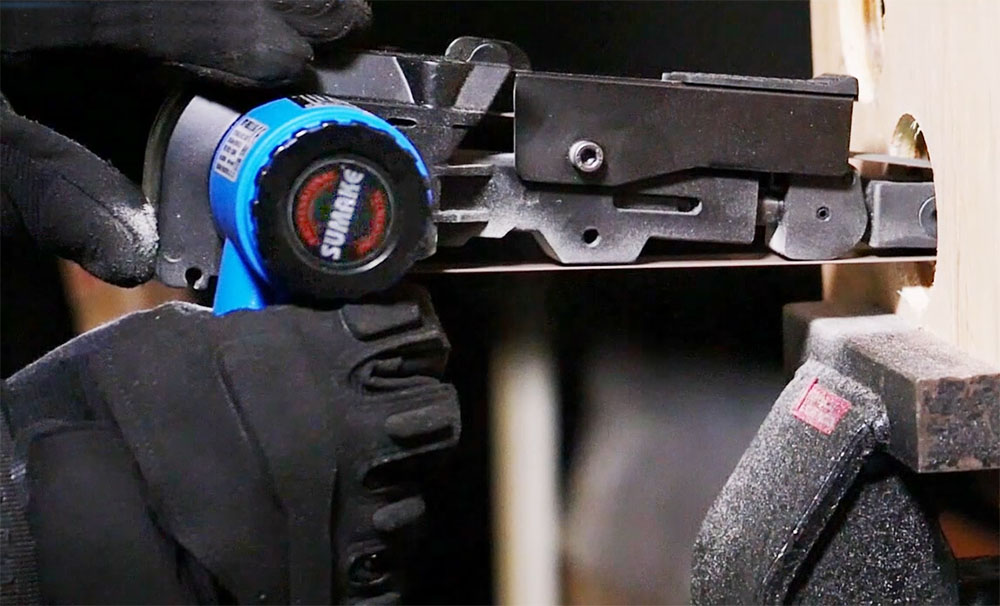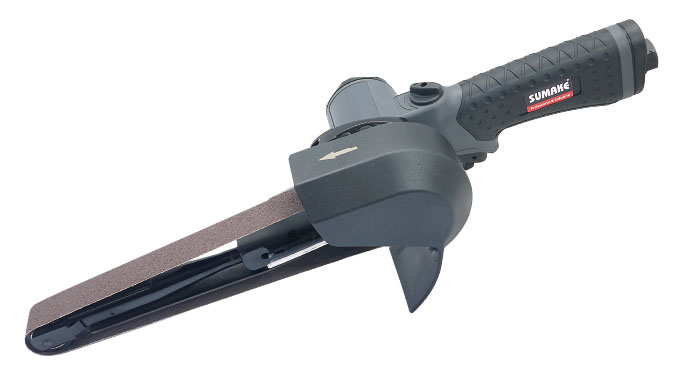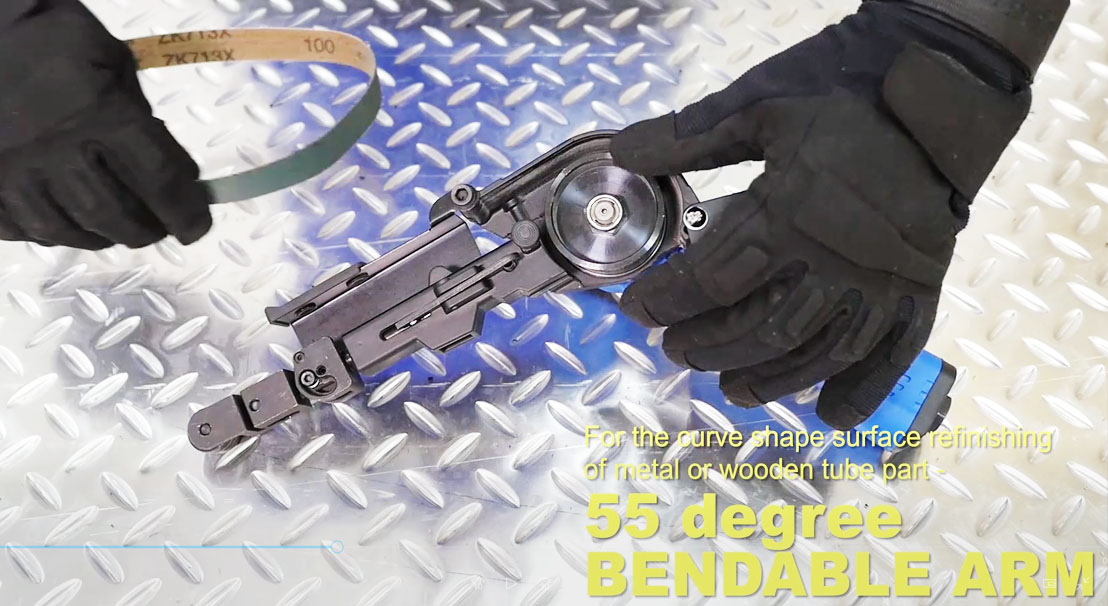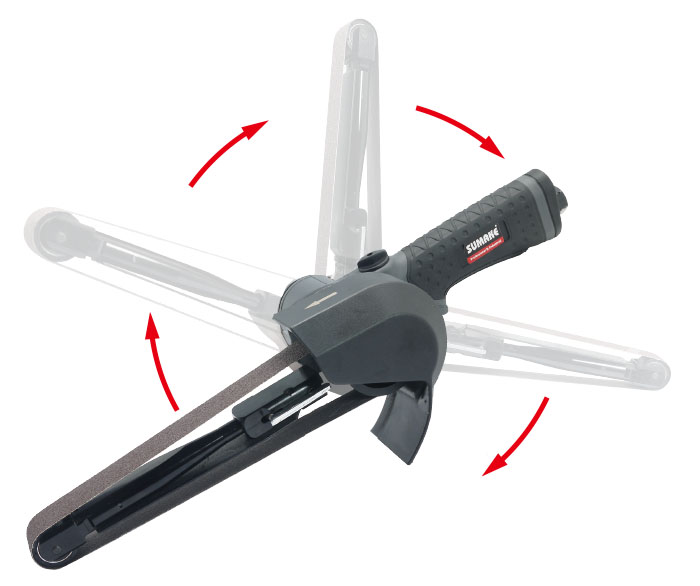How to Properly Use a Belt Sander

A belt sander is a powerful tool designed to quickly remove material and smooth surfaces, especially wood.
When used correctly, it can save you time and produce excellent results. Here's a step-by-step guide on how to use a belt sander safely and effectively.

Before using a belt sander, take time to understand its parts is a good idea?
✅The sanding belt (abrasive belt)
✅Front and rear rollers (to hold and move the belt)
✅Belt tracking knob (to adjust belt alignment)
✅Speed control ( SUMAKE ST-BS510 provides built-in regulator for adjusting the speed according to the user’s needs)
Make sure the air hose is removed before adjusting or changing the belt.

Select the appropriate grit based on your task:
✅Coarse grit (40–60): for removing paint or smoothing rough surfaces
✅Medium grit (80–120): for general sanding
✅Fine grit (150–220): for finishing work
Install the sanding belt according to the arrow direction printed on it.
● Prepare Your Workspace
✅Work in a well-ventilated area.
✅Secure your workpiece with clamps.
✅Wear safety gear: safety glasses, dust mask, and hearing protection.

● Start Smoothly
✅Hold the sander firmly with both hands.
✅Place the rear of the sander on the material first.
✅Turn on the sander and let it reach full speed before lowering the front onto the surface.
✅Always keep the sander moving to avoid gouging the wood.
✅Some specific sanders (ex. SUMAKE ST-BS510) allow you to adjust the head angle to suit your working position.

● Sand in the Direction of the Grain
Always sand in the direction of the wood grain to achieve a smoother finish and avoid scratches. Use steady, even pressure—let the weight of the tool do most of the work.
● Avoid Common Mistakes
✅Don’t press down too hard—it can damage the material and overheat the motor.
✅Don’t stay in one spot for too long—this can create uneven surfaces.
✅Always check the belt alignment during sanding to prevent slipping or damage.
● Turn Off Safely
When finished, lift the sander off the surface before turning it off. Wait for the belt to stop before setting it down.
● Clean Up
✅Brush off sawdust from the belt sander and your workpiece.
✅Empty the dust bag or vacuum the dust port.
✅Store the sander in a dry place.
✅Using a belt sander the right way can make your projects faster and more professional. Practice on scrap wood before tackling your main task, and always prioritize safety.
✅Perhaps you would like to explore more products, please click here

